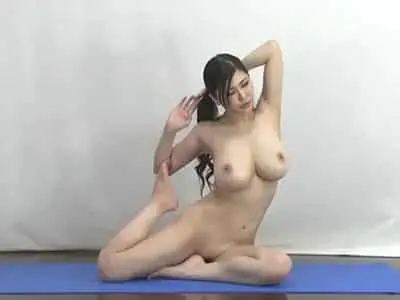Stretching

Table of contents
Stretching is a form of exercise that increases body flexibility, relaxes muscles, improves blood circulation and prevents sports injuries by stretching muscles and connective tissues (such as tendons and ligaments). It can help relieve muscle tension, improve joint range of motion, and promote recovery. Here is a basic introduction to stretching and a guide on how to do it correctly:

What is stretching?
Stretching refers to stretching muscles and joints within a certain range through specific movements to increase flexibility and relax the body. Stretching can be divided into the following types:
- Static stretching: Slowly stretch your muscles in a fixed position and hold for 15-60 seconds. It is suitable for relaxation after exercise.
- Dynamic stretching: It activates joints and muscles through controlled movements (such as high leg raises and arm rotations), and is suitable for warming up before exercise.
- Active stretching: Stretch using your own muscle strength, such as lifting your legs and holding the position.
- Passive stretching: Stretch with the help of external force (such as a partner, a wall, or a stretch band).
- PNF StretchNeuromuscular Facilitation (Neuromuscular Facilitation): A technique that combines contraction and relaxation, usually with professional guidance.

The benefits of stretching
- Improve flexibility: Increase the range of motion of muscles and joints.
- Relieve muscle soreness: Promote blood circulation and help muscle recovery.
- Injury Prevention: Improve muscle coordination and joint stability.
- Reduce stress: Relax your body and mind, improve your posture.
- Improved posture: Reduce muscle tension caused by long periods of sitting or bad habits.

How to stretch correctly?
The following are the basic steps and precautions for stretching:
Preparation
- warm up: Do 5-10 minutes of light aerobic exercise (such as brisk walking, jogging or skipping rope) before stretching to warm up your muscles and reduce the risk of strain.
- Choose the right environment: Find a quiet, flat place, wear comfortable sportswear, and prepare a yoga mat or cushion.
- Avoid excessive exertion: When stretching, you should feel a slight stretch, not pain.
Common stretching exercises (for major muscle groups)
Here are some simple static stretching exercises for beginners:

Neck stretch
- action: Sit or stand up straight and slowly tilt your head to one side with your ear close to your shoulder. Hold for 15-30 seconds, then switch sides.
- Target muscle groups: Neck muscles (trapezius).
- Notice: Avoid shrugging and keep your shoulders relaxed.
Shoulder and chest stretch
- action: Cross your hands behind your back, open your shoulders back, push your chest forward, and hold for 15-30 seconds.
- Target muscle groups: Pectoralis major, shoulder muscles.
- Notice: Avoid pulling your arms too hard.
Back stretch (cat-cow pose)
- action: Get on all fours, lower your back and raise your head when you inhale (cow pose); arch your back and lower your head to your chest when you exhale (cat pose). Repeat 5-8 times.
- Target muscle groups: Muscles around the spine and core muscles.
- Notice: Move slowly and coordinate with your breathing.
Leg stretch (front thigh)
- action: Stand, hold the wall with one hand to maintain balance, grab one ankle with the other hand, pull the heel toward the buttocks, hold for 15-30 seconds, then switch legs.
- Target muscle groups: Quadriceps femoris.
- Notice: Keep your body upright and avoid leaning your knees too far forward.
Leg stretch (back of thigh)
- action: Sit down, straighten one leg, bend the other leg, place the sole of the foot close to the inner thigh of the opposite side, lean forward to touch the toes, hold for 15-30 seconds, then switch legs.
- Target muscle groups: Hamstrings (back of thigh).
- Notice: Keep your back straight and avoid hunching.

Calf stretch
- action: Face the wall, support the wall with your hands, lunge with one leg forward, straighten the back leg, and keep the heel on the ground. Hold for 15-30 seconds, then switch legs.
- Target muscle groups: Calf muscles (gastrocnemius, soleus).
- Notice: Keep your back leg straight and your heel on the ground.
Precautions when stretching
- Control Strength: You should feel a slight pull when stretching, and never stretch to the point of pain.
- Keep breathing: Do not hold your breath when stretching, maintain even and deep breathing.
- Symmetrical stretch: Stretch both sides to keep your body balanced.
- Regular: Stretching should be performed 2-3 times a day or a week, each time for 10-15 minutes. Long-term persistence will achieve the best results.
- Avoid rebound stretching: Do not move quickly during static stretching to avoid strain.

When should you stretch?
- Before exercise: Perform dynamic stretches (such as high leg raises and jumping jacks) to activate your muscles.
- After exercise: Perform static stretches to loosen up your muscles and promote recovery.
- Daily relaxation: After sitting or standing for a long time, you can do simple stretching to relieve muscle tension.
FAQ
Does stretching hurt?
- Correct stretching should only feel a slight stretch. If you feel severe pain, it may be that the movement is incorrect or you are using too much force. You should stop immediately and adjust.
How often should you stretch?
- Stretching for 10-15 minutes a day is most effective, especially after exercise or after staying in the same posture for a long time.
Who is not suitable for stretching?
- People with acute muscle or joint injuries (such as strains, fractures) should avoid stretching and should only do so under the guidance of a doctor.

Simple stretching program (for beginners)
Here is a 10-minute daily stretching routine:
- Neck stretch (30 seconds each) - 1 minute
- Shoulder and chest stretch – 1 minute
- Cat-Cow (8 reps) – 1 minute
- Front thigh stretch (30 seconds each) - 1 minute
- Back thigh stretch (30 seconds each) - 1 minute
- Calf stretch (30 seconds each) - 1 minute
- Whole body relaxation (stand and take a deep breath, stretch your arms upwards) - 1 minute

Advanced suggestions
- Use assistive tools: Such as yoga straps, foam rollers or yoga blocks to help you stretch more deeply.
- Learn yoga or Pilates: These exercises are more effective when combined with stretching and strength training.
- Ask a professional: Such as fitness coaches or physical therapists, design stretching plans based on individual circumstances.
Further reading:








